Earth On The Move
This week, will mass COVID testing in Liverpool get us out of lockdown? Antibodies to defend the brain; and why we’ve evolved to laugh! Plus we look at the Earth on the move: from our journey through space, to how tectonic plates rearrange themselves, ocean currents bring us warm weather, and how massive storms appear...
In this episode
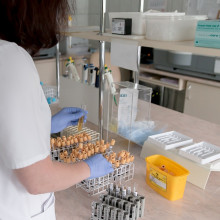
COVID testing all of Liverpool
Julian Peto, London School of Hygiene and Tropical Medicine
With an estimated 50,000 new coronavirus cases per day, and, according to the Office for National Statistics, 618,000 people infected across the UK at the moment,that’s 1 person in every 90,the country is back in a state of lock down. This is despite the UK having one of the highest testing capacities in the world now: over 20 million tests have been carried out - more than double the number in France, Spain, and Italy. But the reason that the coronavirus is so hard to get on top of in many countries is because, in more than half of cases, the infected person has no symptoms. And because we only test and follow up people who have symptoms, we’re missing the majority of the cases. One answer is to just test everybody, and that’s the experiment now going on in the city of Liverpool: mass screening of the entire city to flush out and isolate infectious cases and rein-in the outbreak. So how will it work, what will it prove and what's the evidence from other countries that this might be the right way to go? Chris Smith spoke to epidemiologist at the London School of Hygiene and Tropical Medicine Julian Peto…
Julian - The purpose of mass testing is to identify people before they've infected anybody else, then to lock their household down, and also to trace their contacts rapidly.
Chris - Why have they decided to do this in Liverpool now?
Julian - Because Liverpool's got the highest rate in Britain. So you're testing the approach and addressing an urgent public health problem. The difficulty is, they're launching it within a couple of days of starting lockdown. And of course the infection rate is going to drop very fast anyway, as a result of lockdown, so it's not clear that they'll get very good evidence on how well it's working.
Chris - We know that this has been done. China have famously now done this on the scale of millions, taking cities with 9 million people in them, in some cases, and testing the lot in under a week. So how are they doing it? And if they've proved it works, why aren't we already doing it?
Julian - Well, they weren't doing regular testing. They tested the entire population of the city, that they already had all sorts of stringent sort of testing and tracing, and lockdown processes were going on. The idea that I've been plugging for a long time, is that if you test everybody once a week, you could just end lockdown. You've reduced the rate of transmission so much that we could all go back to the pub, and start going to football matches and kissing our grannies.
Chris - How are they actually going to do this in Liverpool? What's going to be the mechanism for doing these tests?
Julian - People simply volunteer to get tested, I mean some groups such as NHS workers and so on are being targeted, but they've also invited anybody who wants to test to simply go to a testing center and have one. They're using what are called point of care antigen tests, which are tests, which are done on the spot and give you a result within, you know, well under an hour, that's one of the problems with the demonstration projects. I mean, you want to try and test the whole population, not just people who turn up to get tested.
Chris - Slovakia have been doing this as well. Haven't they, in recent days? They have tested at enormous scale, a very large number of people and picked up a significant number of people, who both did have symptoms, but equally those who didn't,
Julian - They tested 3.5 Million out of a population of about 5.5 million over a couple of days. And they're going to repeat it a week later, they found 1% that were infected. It'd be interesting to see what happens when they do it a week later, simply doing it twice every two weeks, I mean like the intervention in Liverpool, which is the same thing, it could knock it down, but of course it won't have any subsequent effect. It'll creep back up again afterwards. You've got to keep it going for three or four weeks, at least, to bring it down to such a low level that you can then do it this frequently. Or we introduce it every month or two, as it starts to creep up again,
Chris - Thinking about the practicalities then of doing this on the scale, not just of a city like Liverpool, but if it's going to be useful, we're going to have to do the whole country. Aren't we? And we're going to have to do it regularly. So in practical terms, can we lay our hands on the sort of testing capacity that we need, and how much is this actually gonna cost?
Julian - As far as the testing capacity goes, by far the cheapest and quickest way of getting the capacity you need, which has in turn been a test today, is a method called lab testing. It's a simplified version of the PCR testing that they're using already.
Chris - And how long would we have to keep doing this for?
Julian - I don't think you need to do it for more than three or four weeks. You might have to do it again a few months later. You wouldn't just go on doing it. I mean, once you got the infection down, to one in several thousand, you'd obviously slacken off and then preferably introduce it later. But it's much nicer to reintroduce mass testing every few months, without any lockdown, so to introduce lockdown it would be a few months.
Chris - So the strategy therefore would be, you take in the entire country, you test everybody, you pick up en masse, all at once, all of the infected cases, whether symptomatic or not, and you isolate them. And because you're doing that all at once en masse, you are breaking the transmission chain, there and then, and that will translate, you're saying, into a big reduction in cases, which buys us a big window effectively, of low levels of virus and, we're effectively almost back to normal, at least for awhile.
Julian - Yeah. So I mean, it's a permanent strategy for keeping going without destroying the economy, until a vaccine becomes available. For a vaccine to be available for the entire population is going to take a long time. I'd be very surprised if everybody's going to get vaccinated within less than a year.
Chris - It sounds like a really compelling case. So why have the government, not just of this country, but many countries not pursued this more aggressively.
Julian - There are a whole series of reasons. I mean, first of all, it's never been tried in any country ever, testing the whole population once a week, to control a pandemic like this. Secondly, there are very strong vested interests involved. I mean, the government's advocating very large contracts for testing and tracing. The method that I'm recommending would be one without their involvement, one rather irritating thing is, that the expert modelers who've been advising the government, didn't think of it themselves and so they reacted by saying: "What an idea!?" Although, there's never been any serious scientific objection raised.
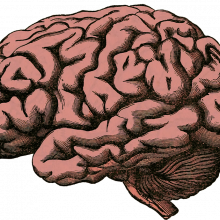
07:30 - Cells to protect the brain
Cells to protect the brain
Menna Clatworthy, University of Cambridge
The brain sits cocooned inside a series of protective layers called the meninges. These, together with a structure called the blood brain barrier, keep out unwanted infections that could otherwise be lethal. But how exactly the brain’s defense systems work isn't known. Now, a new discovery has added an important piece to the puzzle: specialised plasma cells, these are blood cells that make antibodies, learn to recognise important, potentially harmful bacteria in the intestine and then make their way to the outer part of the meninges, called the dura, where they churn out antibody to keep the brain bug free. Menna Clatworthy from the University of Cambridge, spoke to Chris Smith about this work, published in Nature...
Menna - The thing that really got me interested in thinking about the brain, is that there's increasing evidence, that the immune system plays a role in a number of brain disorders. So things like depression and anxiety, and even the progression of neurodegenerative diseases like Parkinson's disease. As well as that, we know that the immune system is required to defend parts of the body from infection. So this could be important for defense against infections in the brain and in the meninges. So things like meningitis.
Chris - How did you pursue this to try and work out how the brain was actually fending off infections?
Menna - As with many studies in immunology, we use the mouse as a model. And so the first thing that we did was to take meninges and look at them under the microscope. And there were plasma cells in the dura, and they were not just scattered anywhere. They were actually lined up along the border of large blood vessels that run through the dura. These blood vessels are called venous sinuses. The next question, when we found these plasma cells, was what antibody they were producing. To our surprise, we found that rather than producing IgG, what's normally found in the body, they were actually producing IgA, an antibody that's normally found in the gut.
Chris - So you've got this interesting observation, sort of anatomically in the first instance, of blood vessels running through the meninges, they've got cells that make antibody, lining up along them. But the antibody they're making is one that you would not normally associate with the bloodstream. It's one that you would find in the intestine.
Menna - Yes. So that was surprising. And I guess the next question was, well, do these cells actually originate in the gut or are they influenced by the gut? So to answer that we were able to use mice that have never seen any sort of bug. They have no bacteria or any microbes in their intestine. And when we looked at the dura from these animals, there were no IgA cells whatsoever. But when we added bacteria back into their gut, suddenly again, the antibody producing cells reappeared in the dura. And even if we only put one type of bacteria into these mice, a type of bacteria that couldn't go anywhere, other than the gut, we still saw the cells reappear in the dura. So that told us that those cells originated in the intestine.
Chris - The sort of hypothesis then, is that the bacteria go in the intestine, they educate the immune system and immune cells in the intestine, and what, the cells then migrate from the intestine with the knowledge of how to make antibodies against those specific microbes, up to the brain and take up residence in the meninges around the brain.
Menna - Exactly. And they specifically take up residence at the border of these dural venous sinuses. And I guess then the obvious question, well, why, why would that happen? Why is the system being set up? And the obvious answer would be, well, maybe those cells are there to protect the brain from microbes, bacteria that originate in the gut, but get into the bloodstream. And when they're flowing through those venous sinuses, where blood flow is quite slow, it's an opportunity for the bugs to get out into the brain. So to test that what we did was to remove all of the antibody producing cells, and then we challenged mice with microbes into their bloodstream. And what we found was the bugs were able to get across into the brain. So it told us that really we'd found a whole new defense system for the brain.
Chris - What are you going to do next?
Menna - We're interested in the signals that might take the plasma cells from the gut to the meninges. And then the other thing I'm really interested in is whether this has implications for how we try and protect people from meningitis. At the moment, if we vaccinate against meningitis, we give that vaccine into the muscle, but our study would suggest that actually, if you want to make cells to defend the brain, the route that you should give that vaccine is actually via the gut. And so that's something that we're looking into.
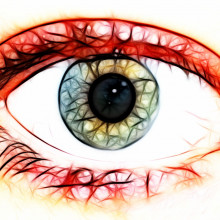
13:44 - Gene therapy to treat glaucoma
Gene therapy to treat glaucoma
Veselina Petrova, University of Cambridge
In countries like the UK, about 2% of people over 40 have the eye condition called glaucoma. This is where pressure builds up inside the eye, damaging the optic nerve. Untreated, it causes irreversible blindness and is a major problem worldwide. Now, researchers have come up with a way to use gene therapy to stimulate the damaged optic nerves to regenerate in experimental animals with the condition. Veselina Petrova worked on the study at Cambridge University, and spoke about the work, published in Nature Communications, with Adam Murphy...
Veselina - In our study, we looked at the ability of a molecule called protrudin to promote regeneration and repair of the injured nerves, and we've used three different models to test this. In one model we grew nerve cells in a dish and injured them using a laser, and in two other animal models we actually use the optic nerve damage to look at the efficacy of protrudin. The optic nerve is actually the nerve that connects the eye to the brain and which relays visual information. And what we found in our study is that in all three models, delivering protrudin to the nerve cells actually improves not only their survival, but also their repair and regrowth after injury.
Adam -
Could you tell us what protrudin is then?
Veselina - Yeah, protrudin is a protein which is normally found in the cells. And what it actually does is it acts as an adaptive protein, and it brings together a lot of things that are important for growth, and concentrates them exactly at the area that they're needed at during growth after injury.
Adam - And then when this chemical is in cells in the eye, it means it regenerates them and makes them live longer. Is that right?
Veselina - Yes, that's right.
Adam - And then how do you know that it works? Mice are hardly famous for their eyesight...
Veselina - Yeah, that's true. We are currently doing further studies to actually look at the functional output to see whether they can regain some of their vision back. But this is some of the greatest regenerative effect that we've seen with any treatment in our lab. We believe that such a massive outgrowth... if we can make these nerves grow back so there are target areas in the brains, then that could really help functionality. But we're currently studying this.
Adam - Do you know if this is a long term effect, or is it just temporary?
Veselina - So we've only looked in our mouse models for several weeks after injury, and we could see really sustained effect in humans. Of course we have to test this, but there's currently some treatments that have been licensed specifically for the eye. And they really show that if you deliver gene therapy to the eye, that leads to a long lasting effect. So we hope to see a similar thing with our gene therapy approach.
Adam - And how likely is something like this to work in humans?
Veselina - There's already treatments that are available in the UK that include gene therapy in the eye, and there's several others that are underway in clinical trials. So gene therapy does work in the eye. How likely our treatment is to work in the eye? As I mentioned, we've only tested this in animals, so there is a lot of further work needed to see whether first of all, it's safe; also effective in humans. But we're really hopeful that even if it isn't, we've discovered a new pathway involved in the process of regeneration, which could potentially provide some targets for pharmaceutical treatment.
Adam - What about other conditions where there's nerve damage like spinal cord injury? Could a similar kind of approach work there?
Veselina - We tested this in the eye, but the eye is part of the central nervous system, and the optic nerve is part of the central nervous system, and nerves of the spinal cord and the brain are also part of the central nervous system. So we believe that similar processes are happening in all these systems, and possibly we could apply what we found in the eye to the spinal cord and the brain. And we're actually doing these studies in our laboratory right now. So hopefully I'll have an answer for you later on.
Adam - How do you actually get this protruding into the eye?
Veselina - We use viruses which have been inactivated, so they're not infectious. We just take the outer coat of the virus and package the gene inside, and then we trick the cells of the brain into thinking that the virus is infectious, so they take up the virus and the DNA is released and integrates into the eye cells' DNA. So it's kind of like a Trojan horse, If you think about it: we just trick the brain to think that the virus is infectious, but it's not actually, we just use it as an approach to deliver the gene to where we need it.

18:24 - How did laughter evolve?
How did laughter evolve?
Jonathan Silvertown, University of Edinburgh
Laughter is a bizarre thing: the sounds we make, the faces we pull when doing it, and it doesn’t matter where around the world you go, we all do it. So why have we evolved this way? Well that’s the question that Edinburgh University evolutionary ecologist Jonathan Silvertown takes on in his new book “The Comedy of Error: why evolution made us laugh”. Katie Haylor heard what he had to say...
Jonathan - We laugh in response to humour. So what is humour? And people have wrestled with this for a very long time. It turns out that modern science could pretty much answer this question, but nobody has yet actually put it all into a little book. So I did! You might think of humour as a stimulus and laughter as the response. Immediately, you put it like that, it kind of fits into the standard language of describing behaviour. Laughter in the broader context is something called a play vocalization. Most of the last you'll hear during your working day will be nothing to do with jokes; it will basically be the noises that people make when they are communicating with each other in a friendly way. It's very much a social thing. So it turns out that rats laugh in social situations. They modulate their laughter as well. Scientists taught rats to play hide and seek.
Katie - Aww!
Jonathan - Apparently it takes two weeks to teach a rat to play hide and seek. And it turns out that when the rats are hiding, they stay quiet; and when they're seeking, they laugh. So human laughter is a play vocalisation. It's something that is found throughout social mammals, so far as we know. That means from an evolutionary point of view that it must be really ancient; it must go back to the common origin of mammals, or at least social mammals, and that makes it tens of millions of years old. Certainly verbal humour can't be any older than language; maybe a million years? It's not 20 million years old for sure. So laughter evolved first. And at some point during our evolutionary history, laughter became attached to humour. Whereas most of the laughter you hear is essentially a kind of social lubricant that says, "we're having a good time, it's all fine. Don't worry if I say something a bit cheeky, I'm just joking." In the case of rats, it means, "if I'm chasing you, I'm not attacking you, this is just play." But when it became attached to humour, it did something else. But what is that and why did it happen? And what good is it? And those are actually all the things I address in my book.
Katie - Is there anything to be learned in the difference of laughs? Because you know if you're really finding something funny, you might do a big belly laugh; or maybe there's a sort of "heh heh heh"?
Jonathan - There is the natural laugh and there is the forced laugh. We can all tell the difference instantly. And that is very interesting from an evolutionary point of view as well. It's difficult to fake laughter that other people will believe is real. I mean, that's the other thing that demonstrates this is really very much a biological phenomenon: is its universality. It's found in all cultures.
Katie - Is there an evolutionary benefit to laughter? Is this about getting on better with people, or being less of a threat?
Jonathan - So if we're talking about evolution, it can be good for survival and it can be good for reproduction. Or both, actually! I know a lot talking about the contemporary world of human evolution, but anciently evolved characteristics tell you there was something in the first place that favoured laughter as a play vocalisation. It's a signal that makes life safer.
Katie - Is there a reproductive benefit to being funny?
Jonathan - My hypothesis is it's all about sexual selection: demonstrating how clever you are, being clever in a clever species, is sexy. How do you find out if they're clever; or more importantly, how do they convey to you that they are genuinely clever? Well, there are various ways: you can give lectures and become a professor, but that takes a long time, by which time you probably have children! Or you can tell a joke. To be a good signal of anything it has to be unfakeable. Laughter is very difficult to fake, but actually so is genuine humour. If you make a joke that falls flat, do you feel an idiot? It's a pretty good sort of rule of thumb for intelligence. Cross-cultural studies in something like 50 different nationalities... in all of them, if you ask people what they're looking for in a mate, good sense of humour comes in the top three. Both for men and women. Sexiness is pretty well established, it's pretty universal. So there have been experimental studies which suggest that it does actually work. But to answer the question, "what good is humorous laughter," we have to think differently. People have tried to answer this question for at least 2000 years; it's something Aristotle wondered about. These days, the people who study the subject - and comics as well, I think, by and large - come down to the idea that it's all about incongruity: the difference between what you expect and what actually happens. Darwin said that basically there's incongruity; you mustn't feel threatened in any way; surprise helps; and being young helps, basically. He said he's observed... "many a time I've observed young people who seem to be laughing for no good reason." I'll give you a joke: I went to the zoo the other day. All they had there was a dog. It was Shih Tzu.
Katie - [Laughs]
Jonathan - If you hadn't known that there was a dog called a Shih Tzu, you wouldn't find that funny at all. So jokes depend upon culture, upon knowledge, upon processing, and that's why they're subjective. Or one of the reasons anyway.

Earth's journey through space
Matt Bothwell, University of Cambridge
The Earth is spinning, and we’re whizzing around the Sun at a dizzying speed; our journey through space is also not circular, and the Earth is tilted on its axis; both of these factors make a world of difference to life here on the planet’s surface. To put some numbers on this, Chris Smith spoke with Cambridge University space scientist Matt Bothwell...
Matt - I guess the answer is it depends which way you look at it. The earth is rotating and we're rotating at about a thousand miles per hour if you're standing at the equator. But the earth is also orbiting around the sun. If you zoom out of it, we're traveling at about a hundred thousand kilometers per hour around the sun. So somewhere between fast and very fast, depending on which way you look at it!
Chris - And of course it doesn't stop there does it because the sun is on its own orbital journey around our galaxy. And our galaxy is on its own orbital journey around its cluster of galaxies.
Matt - Exactly. Yeah. The Milky Way is rotating once every couple of hundred million years. And we are traveling around 200 kilometers per second around the centre of the galaxy, which is just a phenomenally large feat.
Chris - So it's quite hard to actually say how fast we really are moving through space!
Matt - Exactly. You always need to define it relative to something, right. If you're traveling in a car along a road at 60 mph, you're defining your speed relative to the roads, it's all about what you, what you're traveling relative to, I guess.
Chris - But returning to our cosmic neighborhood and how this affects life on Earth for us, why do we have a seasonal pattern to the weather?
Matt - So that's all about the earth's axial tilt. So the earth isn't actually straight up in space. The earth is a bit wonky. We've been knocked off the straight axis by about 23 degrees. That's actually the evidence of an ancient impact. So billions of years ago, the earth was struck by some kind of big body in the solar system. It's the same impact that formed the moon. And ever since then, the earth has been wonky by about 23 degrees. And that's why we have our seasons. So as we go round and round the sun, the Northern hemisphere in one part of the cycle, and then the Southern hemisphere six months later, in the other part of the cycle will be pointing towards the sun and will therefore get more sunlight and will experience summer. So we only have seasons because of this axial tilt.
Chris - And is that axial tilt stably wonky or, or does it wobble around?
Matt - It actually wobbles around. So there is a 26,000 year cycle where the earth's axis wobbles around a bit like a spinning top. If you imagine setting a spinning top going and seeing it kind of slowly rotating around, that's kind of what the earth does. So over about 26,000 years, the earth's axis rotates around. It's called the procession of the equinoxes. And because of that, the night sky actually shifts. So Polaris for example, is the North star right now. It's the star that is above the earth's axis. If we wait a few thousand years, the earth's axis would have shifted around and Polaris will no longer be the North star. About 5,000 years ago when the pyramids were being made, we had a different North star and we will have a different North star again in the future. It's kind of amazing the night sky shifts above our head because of the earth.
Chris - Yeah. It boggles your mind. Doesn't it. Given that the earth is tilted, but that tilt, you're saying wobbles about, does the wobbliness with this 6,000 year cycle translate into climate changes with a similar sort of cycle?
Matt - Yes, it absolutely does. There are these things in climate called Milankovitch cycles, and these are the cycles of the climate that are caused by the earth's motion in space. As the earth travels around the sun, sometimes it's orbit is a bit more squashed and sometimes it's more circular and this the wonkiness of the earth changes over this 26,000 year period. And then, so over hundreds of thousands of years, yes, the climate changes because the earth is orbiting in very slightly different ways around the sun.
Chris - And if we come down and sort of land on the earth surface for a moment, you did start by saying the earth is spinning pretty fast. First of all, why is the earth spinning pretty fast? And what effects does that have?
Matt - So the earth is spinning for the same reason that the earth is orbiting the sun. We've inherited the primordial spin, if you like, from the cloud of gas that formed the solar system. If you go back billions of years before the sun and the planets existed, there was a big cloud of gas and gravity squashed everything down and formed the planets and the sun. In physics we have a thing called conservation of angular momentum. Basically, if something starts spinning, you can't get rid of that spin. And so any little bit of spin that that gas cloud had originally, would be inherited by the sun and the planets. And so that's why the sun is spinning. The planets are spinning and they're all orbiting the sun. It's all the leftover spin from that original gas cloud.
Chris - And what effect does that spin have on things on the earth surface? For instance, the atmosphere, for instance, the oceans and the seas?
Matt - There's an effect called the Coriolis effect, which is basically caused by the fact that at the equator, that's the fastest you can spin and the higher latitude you go, or the lower latitude towards the South pole, you're actually spinning slower and slower. And if you imagine standing near the North pole or the South pole, you'd be going around very, very slowly, and that causes all kinds of interesting effects in the atmosphere. For example, if you have air going from lower latitudes around the equator, up to high latitudes, it's going to be traveling much faster than the air up in the North. And so, um, that is going to cause all kinds of interesting cyclic effects in the atmosphere and the ocean. And so a lot of what the weather is doing is caused by this Coriolis effect, which is basically a result of the earth spinning round.
Chris - And that would be why storms spin characteristically? When you see them on satellite pictures, they spin one way in the Northern hemisphere and the other way in the South hemisphere.
Matt - Exactly. It's wonderful. When you see pictures of Earth from space, you can see cloud formations, which are just showing you these, these forces caused by the earth's rotation just kind of written in the clouds. It's kind of beautiful.
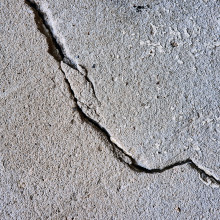
31:30 - The ground moving beneath our feet
The ground moving beneath our feet
Hannah Sophia Davies, University of Lison
The Earth under your feet has gone through some pretty massive movements over its time, and it will continue to do so, as Adam has been hearing from University of Lisbon's Hannah Sophia Davies…
Adam - The earth under our feet is not as solid or as static as we might imagine. The top layer of the earth, the crust is cracked into pieces called plates, and those plates are floating around on top of the layer underneath, which is the mantle. And as old plate sinks back into the mantle new plate is made elsewhere because the earth isn't shrinking. But how does that all work? I spoke to Hannah Sophia Davis from the university of Lisbon about how the earth moves and what the future might be.
Hannah - There's plates being made and destroyed. So where the ocean is being made is at a mid-ocean Ridge. The big mountain range you see in the Atlantic, on maps of the Atlantic, that's where plate is being produced. And then where plate is destroyed, is in the subduction zone. So you see that in the Pacific ring of fire, this big ring of subduction zones where ocean plate sinks back into the earth and destroys it. As the plate sinks into the mantle, it pulls plates along with it. And so essentially the continents float around and they're being pulled and pushed by the ocean plate as it's being made and destroyed. And that's essentially how the plates move.
Adam - But if everything is always moving about, what did things look like hundreds of millions of years ago?
Hannah - The earth used to be in a supercontinent state. And it tends to cycle between super continents and disperse continents. And that's because oceans are always pushing and pulling as the subduction zones are destroying and ridges are creating ocean. And this has happened several times in Earth's history. Pangea formed around 300 million years ago and broke up around 180 million years ago. And when it broke up, it actually formed the Atlantic ocean. And so that's why you can see that kind of jigsaw fit between the Americas and Africa and Europe, because that's still the remnant of the Pangea. You can see where Pangea used to be.
Adam - We used to have one big continent then with everything smooshed together called Pangea. But what does the future hold?
Hannah - Most geologists will tell you the Pacific is due to close and the Atlantic is due to continue opening. It has this very large mid-ocean ridge that is still producing a lot of ocean plate. Logically the whole thing should kind of turn inside out and Pangea should reform over the Pacific ocean. And this new supercontinent is Non Pangea. So a new Pangea.
Adam - That is basically what will happen if everything continues along business as usual for a few hundred million years. There are other options though.
Hannah - Obviously the Atlantic doesn't have to continue opening, and there is evidence that it might not. This could mean that subduction zones start spreading around the edge of the Atlantic. And eventually we have an Atlantic ring of fire that will end up closing the Atlantic too. And so Pangea could end up coming back together. In that situation, we'd just have another Pangea.
Adam - Could it get even stranger? What happened if the Atlantic and the Pacific both closed up?
Hannah - Ocean plate starts to get more dense as it ages. So it really should start sinking into the mantle after around 180 million years. The Atlantic is currently getting to that age and the Pacific is long past that age. We can envisage a scenario where both oceans close, but if you think about the surf, sorry, the earth, obviously you have to retain that surface area. So a new ocean has to form. And the theory is that there is a rift in Asia, which will split to form a new ocean. And that's the Orica scenario. So essentially the Atlantic and the Pacific both close, and we just have a completely new supercontinent, which looks nothing like any of the other supercontinents and a completely new ocean, which is from the breakup of Asia.
Adam - There is one last idea. If you look at a globe, you might notice how compact everything is up around the North pole and how small the Arctic ocean is.
Hannah - There is a theory that supercontinents like to form 90 degrees away from the next supercontinent because Pangea existed for a long time. And it was a very large continental mass. And essentially it kind of left a bit of a scar in the mantle. As super continents - when they form - geophysicists think that the scar will affect where the supercontinent forms. So the fourth scenario that we have kind of out there to propose what the next supercontinent will look like is the Amasia scenario. And that's essentially just that all of the continents will just kind of smush together in the Northern hemisphere.
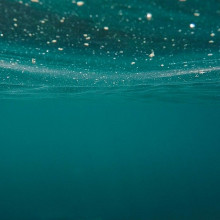
The swirling oceans around us
Erik van Sebille, Utrecht University
We may call the planet “Earth”, but its surface is mostly water. And fuelling giant ocean currents, that water is constantly on the move and has huge impacts on the climate and environment. Erik van Sebille is an oceanographer from Utrecht University, and he spoke to Adam Murphy about our swirling oceans.
Erik - Yeah. So you may have heard of the Gulf Stream or the Kuroshio of Japan, or maybe the East Australian current off of Sydney. And those are what we call Western boundary currents. And they are the Western monikers of the giant gyres. Gyres are gigantic, basin-spanning swirls, essentially, there's one in each ocean basin so there are five in total. And the highest speed in each of these gyres is not much more than walking pace. And most of it is much slower. So it takes maybe five years or so to do a total loop around one of these gyres. And what are they forced by? Well, the gyres are forced by the winds that are blowing over the ocean. And in particular there are the easterly flowing trade winds near the equator, and the westerly flowing winds at the solar latitudes, and all of this creates those gyres. But really the biggest current of all is the Australian circumpolar current, as we call it. It runs from West to East around Antarctica. It is more than two kilometers deep. It is hundreds of kilometers wide. And in total it transports 150 million cubic metres per second. And that is roughly a hundred times more than the combined outflow of all the rivers in the world.
Adam - Wow. That's huge! And you mentioned that the Gulf stream, so what is that, how is it formed and what does it do for us?
Erik - Yeah, exactly. So the Gulf stream is the Western side of the North Atlantic gyre. It's on the Eastern side of the US but as oceanographers, we like to have an ocean centric world view, right? Where we look at the ocean itself! Now each basin, like the North Atlantic, has a Western boundary current as they call it, a current on the West, has a beautiful mathematical proof. And it's called a sverdrup solution. And in short it has to do with the rotation direction of the earth, and the fact that the Earth is a sphere and not an infinite cylinder. So that actually the rotational speed varies with latitudes. Now, because of that, really the only possible mathematical solution is a gyre with a very strong current on the Western sides. But note that this solution can't actually explain why the ocean is the way that it is, because yes, it explains the Western boundary currents, but on top of those large scale gyre flows, the ocean is also chock full of what we call eddies. Now eddies are much smaller vortexes, maybe a few hundred kilometers in diameter or so, and they are kind of like the bubbling turbulence nature of the entire ocean as it moves around.
Adam - And another thing people might have heard of that they might not be too sure of - I know I'm one of those people - you sometimes hear about something called El Niño in the news. What is that? And what does that do?
Erik - Yeah, so El Niño is not per se about currents. El Niño is a massive redistribution of heat in a tropical Pacific ocean. So sometimes, and especially during what we call La Nina periods, the heat goes from the atmosphere into the ocean. And it means that worldwide, the atmosphere cools a little bit for a few years. And then during an El Niño, the heat comes back and the atmosphere warms up extra fast globally. So this is really a measurable effect. While winds are certainly important in El Niño, it's not really connected with the current. So I guess that even if the ocean would not move there would still be things like the El Niños I think
Adam - Those ocean currents, you mentioned earlier, they're not exactly clean, are they?
Erik - No, I know what you're speaking about. They're not clean at all. The ocean currents carry enormous amounts of plastic around. And what happens actually is that within the gyres, so these five gigantic swirls around the ocean basins, the flow's actually slowly inwards. So as the flow spirals slowly inwards, the plastic goes with it until then, in the middle of the gyres, so in the centers of the basin, the water sinks down a little bit. But the floating plastic is of course too buoyant. So it stays behind. And as new plastic spirals in, there's a constant more and more plastic piling up. It's a bit, I guess like the turd that won't flush!
Adam - And then how are things going to change and change as we see the climate changing more and more?
Erik - Yeah. So that's the big question. So the ocean by itself is absolutely going to change. And that is, of course, the sea level rise that we know is the ocean warming up, the ocean becoming more acidic because CO2 is actually captured within the ocean. So 25% of all the carbon dioxide that we've burned as society has gone into the ocean. It's a bit as if you get a 25% discount on our fossil fuel emissions. So that is all absolutely happening. But what the currents are doing is a little bit less clear. Now we know that winds are probably going to be intensifying. So you would expect the gyres to spin up a little bit and to go a little bit faster. And that probably means that they also become more unstable. So it would probably more eddies, but exactly what that then means we don't know. So it's a bit unclear. We don't even know about the large scale, kind of like what we call the thermohaline circulation, where all the ocean basins are connected and where heat is redistributed between the gyres, rather than the flow within the charters. We don't even really know what that is going to do in a changing climate. So as oceanographers, we have a really difficult time to predict what will happen. We don't have much evidence from the, about the strength of the currents per se. So what exactly it is, yeah, we just don't know.

The formation of storms
Conni Klein, UK Centre for Ecology and Hydrology
2020 was a record breaking year for storms in the Atlantic, with dozens of named storms and cyclones spawning and making their way across the ocean. But how do they get going in the first place, and why are some more destructive than others? Chris Smith spoke to Conni Klein from the UK Centre for Ecology and Hydrology...
Conni - So tropical cyclones over the Atlantic, they generally develop from tropical disturbances, so Africa. And those disturbances are thunderstorms that are just packed together to a cluster and they travel with an area of low pressure over the continent. And those disturbances are actually the seedlings for tropical cyclones of which hurricanes are just a very extreme version. So those disturbances, they can strengthen over the Atlantic once they leave West Africa and they might develop into a hurricane when some ingredients are present in the atmosphere, but probably the most important ingredients, the warm, moist air over the ocean as a fuel for the storm. And such conditions we actually only find over tropical oceans with an ocean surface temperature of about 26 degrees and above. And so when the tropical disturbance moves over the ocean, it's sucking in air towards this low pressure center that already exists. You know, areas moving from high to low pressure. This air is sucked in, it's warm and moist, and this basically just comes from the evaporation of the very warm ocean. And once this air is lifted, in the case of a hurricane development, actually this air is highly unstable. So it continues to rise into this disturbance. And unstable really means that the rising air parcel remains warmer, which means it has lower density than the surrounding air masses. And it rises more rapidly into this storm. the greater the density difference to the surroundings is.
Chris - So the key ingredients then are you need something like a seed crystal, you get your initial storm over Africa, some disturbance. And when it meets this killer combination of some nice, warm seawater, which is warming the air above the water and making it saturated with moisture, it's that combination that then really accelerates things and you end up with a hurricane brewing off the back of it?
Conni - Yeah, exactly. So what is actually then happening is once this air gets moving into the storm, because the air is so moist, it releases additional energy from the water vapour in the air. Because water vapour is basically stored energy that was needed to evaporate the water from the ocean. And it's then released once the air rises and cools, it's released again in liquid water droplets
Chris - It's like the reverse of sweating, isn't it? So when you sweat you rob energy away from the skin to turn your sweat into water vapour, but when it turns back into a liquid in the atmosphere, it gives you extra energy and that's going to give the hurricane an extra thump.
Conni - Yeah!
Chris - Yeah. So it's reverse sweating for your hurricane, but what are the implications then for climate change? Because obviously if the killer ingredients are high levels of sea temperature, sustained high sea temperatures, does that mean then that if we warm the world up, we're probably on a course for more hurricanes with more intensity more often?
Conni - Yes. So the biggest factor that is also pretty likely to change rainfall intensities and hurricane intensities in general is just the higher water vapour content that we find in warmer atmosphere in the future. So by every degree that we warm the atmosphere, we actually increase the water vapor content that the atmosphere can hold by 7%. And that also means the atmosphere can rain out more water. And also there is more energy to actually be released in hurricanes. So that would drive stronger circulations and that's very likely to happen.
Chris - So it's a double-whammy then in some respects, isn't it, you're going to get more intense storms more often, but they're also potentially capable of dumping more rainfall when they do make landfall?
Conni - Yes, absolutely. And also stronger winds. Yeah. So those two factors are very likely to happen. What is not very clear yet is whether we will see a higher frequency in hurricane numbers overall. But it's quite likely that of the hurricanes we get a higher proportion is quite extreme.
Chris - Have we gotten any evidence that this is the case? Because obviously the earth has gone through patterns of changing climate over many, many thousands to millions of years. Is there evidence that what we're predicting with climate change has happened in the past with high temperatures meaning higher storm intensities and frequencies and therefore more destruction?
Conni - Yeah. So unfortunately the past sort of observations of hurricanes are not that dense or reliable that we can sufficiently or robustly relate it to anthropogenic forcing. But since the seventies, we actually have observed an increase in very extreme hurricanes above the category of three. So the ones that are really destructive. And otherwise we see this sort of behavior in models and projections yeah.
Chris - Can you tell us, Conni, the intriguing thing about how these storms get their names?
Conni - Tropical cyclones generally get a name when they develop winds that are stronger than 60 kilometres per hour, and then they might develop into hurricanes. And that's when they reach 120 kilometres per hour. So the world meteorological organization actually has lists for that. And it's six lists, they are being rotated over six years and it's very boring actually. It's an alphabetical sort of order of names.

49:14 - QotW: When's the best time to water my plants?
QotW: When's the best time to water my plants?
Phil Sansom dug out the answer by asking Anthony Bridgen from Cambridge University's Sainsbury Laboratory and Guy Barter from RHS...
Kevin - Does watering my veggie garden in the morning mean that water uptake will coincide with the intake of sunlight, and give my vegetables the best chance? Or is it just as good to water in the evening?
Anthony - In many ways it doesn’t matter too much when you water in regards to the happiness of your plants.
Phil - That’s Anthony Bridgen from Cambridge’s Sainsbury Lab. Anthony, thanks for answering this week’s question. Next week’s question comes fro- ...no, hang on Kevin, I’m sorry. That’s not the end of the story - there are a few considerations here. First - when you water might change how much water evaporates away instead of getting to the plant.
Anthony - If it’s the height of summer, you certainly don’t really want to be watering your plants in the middle of the day. A lot of the water we’re applying to the soil will then just evaporate straight off and be lost, and the plant won’t be able to use it. Additionally, their ability to utilise the water that they are getting might be less.
Phil - That’s because in the midday heat - especially in Australia where Kevin lives - plants might shut their pores slightly to lose less water, and might lower their rate of photosynthesis too. There’s a common myth here too about “leaf scorch”, that water magnifies rays of sunlight to burn the leaves - apparently that’s not true, but midday still not a great time to water.
Anthony - Watering in the morning is a good choice because evaporation from the soil will be lower, because temperatures are lower in the morning. Watering in the evening has the same benefits as morning, but make sure you don’t water the foliage in this instance as, if it’s cold, water droplets containing particles can act as nucleation points, causing freezing at warmer temperatures.
Phil - Evaporation from the soil - and frost aren’t the only considerations. Guy Barter, chief horticulturist at the Royal Horticultural Society, points out that plants might run into the most trouble in the heat of the day.
Guy - If plants are short of water they will shut down in the midday heat and sun in summer. Watering in the morning before they get to the midday deficit is effective. It is also worth mentioning, when they shut down the damage has actually been done, so watering in the morning to head off soil moisture deficit is actually a good idea.
Phil - Kevin, morning seems to be your best choice - but don’t beat yourself up if you can’t get up with the sunrise. Guy agrees with Anthony that this is kind of much of a muchness.
Guy - In real life gardeners take advantage of the fact that plants have evolved over millions of years to be extremely good at coping with lack of water. You know that if you miss a watering, plants look a bit sick but they seldom die, they get used to it. Damage is done of course - very difficult to detect damage - but the plant actually lives. Under these circumstances watering in the evening is good enough. You’re only topping up the soil to keep the crop stress to reasonable levels. You may see a bit of wilting in the middle of the day, but no, it’s not a perfect universe, and one has to put up with a certain amount of stress in real life.
Phil - Life lessons for us all, I think. Thanks Guy Barter and Anthony Bridgen. Next time - what’s in a name? We’re answering this question from Beate.
Beate - If three hundred years ago there was one person with a certain surname, how many people could have their surname today?
- Previous Conflicts over minerals
- Next UK Back in Lockdown









Comments
Add a comment